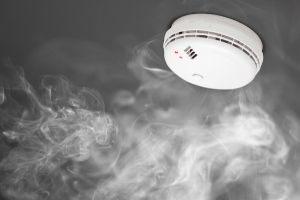To maintain your home, learn thesecommon health hazards for homeowners to know. They can save you from developing long-term health conditions. You can spot some risks with detectors and clean them yourself, while others take the work of a professional.
Radon
Radon is a natural gas that occurs radioactively. It’s already in the air in small amounts, so you’re no a stranger to it. It becomes hazardous when there are cracks and damages present in the foundation of the home.
Carbon Monoxide
Carbon monoxide is a poisonous gas with no smell or color that can end your life. A lack of oxygen in an enclosed space can cause it. You can get a carbon monoxide detector and pair it with a fire alarm to prevent yourself from unknowingly inhaling it at home.
The appliances you use daily that can produce it include the dryer, the furnace, and the water heater. Ensuring that you understand the different types of furnace filters that can improve your air quality and help air circulate throughout the house.
Poison
Make sure you keep all your chemicals locked in a safe area at eye level. If you ingest poisons, contact poison control immediately to ensure you’re making the proper steps to heal. Poisoning is the most common health hazard for homeowners because of the number of chemicals people use for cleaning and getting rid of pests. Old medicines that people don’t dispose of properly and unclosed seals on certain products can also lead to poisoning.
Mold
Mold is the most common health hazard for homeowners to knowbecause it comes from the improper care of things involving water. Mold can pop up in various places in your home. You can identify its presence because of the odor it gives off throughout your house. It’s especially hazardous to people with asthmatic children.
Asbestos
Asbestos is a tiny mineral that can cause carcinogens in the body when airborne. You’re likely to find asbestos in the floor tiles, window caulking, glazing, paint, and plaster of older homes. Unfortunately, there’s no sure way to identify this with complete certainty alone, so call a professional to inspect the issues if you suspect asbestos is present.
After your inspection, they will give you a plan of action to remove and handle the issue. Be sure to get detectors for your house if you don’t already have them. And if you do have them, be sure you check to see that they’re still operating!
For more posts on healthy living, check these out:
Understanding Your Home May Improve Health and Wellness


